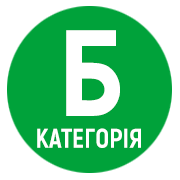USING OF BODY-ORIENTED PSYCHOTHERAPY AS ONE OF THE METHODS IN WORKING WITH CHILDREN AND FAMILIES WHO HAVE SURVIVED TRAUMATIC EVENTS
Abstract
In the article it has been considered and substantiated the theoretical and methodological foundations of the organization of group forms of work with psychotrauma in persons who have suffered as a result of hostilities, based on the introduction of methods of body-oriented psychotherapy. Body-oriented psychotherapy expands the possibilities of psychotherapeutic influence by considering the individual in the unity of its psychosocial and biological functioning. Group methods in working with post-traumatic stress disorders in working with children and families in difficult life situations due to hostilities are a system of psychotherapeutic influence that optimally combines body-oriented psychotherapy with elements of symbol drama, psychological debriefing, behavioral methods of psychotherapy, dancemovement psychotherapy, art therapy, psycho training, pharmacotherapy and other methods aimed at working with clinical manifestations of psychotrauma. The method of body-oriented psychotherapy in work with children and families affected by traumatic events can be a leader, both in working with distant clinical manifestations and to prevent the development of PTSD, in dealing with mental and physical aspects of functioning, resolving intrapersonal conflicts; determining the level of adequacy of self-perception and self-esteem; reducing the level of personal anxiety, mental tension, emotional lability. Its using helps children and families who have experienced traumatic events, with the help of motor psychotechnics to more accurately recognize and verbalize their own emotions, relive their past emotional experiences, thereby expanding the scope of self-knowledge and forming a more emotionally beneficial attitude. In addition, it makes a significant contribution to the further development of ideas about the mechanism of therapeutic action of psychotherapy, as changes that occur with clients (children and families who have experienced traumatic actions) and are the ultimate goal of psychotherapeutic effects affect different levels of body and personality.
References
2. Бутома Б. Г., Аристова Т. А. Применение телесно ориентированных методов психотерапии в комплексном лечении больных эндогенными психическими расстройствами. Обозрение психиатрии и медицинской психологии. 2012. № 3. С. 80–87.
3. Волженцева И. В. Методологические и теоретико-эмпирические аспекты полифункциональной регуляции психических состояний личности эмоциогенными способами: монография. Макеевка: МЭГИ; Донецк: Донбасс, 2012. 536 с.
4. Воробьева Е. А. Роль и место телесно ориентированных методов в работе с детьми. Междисциплинарные проблемы психологии телесности. 2004. № 5. С. 302–307.
5. Ігумнова О. Б. Генеза негативних психічних станів студентів та їх психокорекція: дис. ... канд. психол. наук: спец. 19.00.07 / Хмельницький національний університет. Хмельницький, 2014. 275 с.
6. Ревуцька І. В. Концептуальна модель корекції негативних психічних станів і психосоматичних розладів у дітей дошкільного віку засобами тілесно орієнтованої терапії. Психологічний часопис. 2018. Вип. 5 (15). С. 129– 141.
7. Ревуцька І. В. Концептуальний підхід до діагностування психосоматичних проявів у дітей дошкільного віку. Огляд. 2018. Вип. 2(45). С. 200–210.
8. Романчук О. Cім’я, що зцілює: основи терапевтичного батьківства дітей, що зазнали скривдження та емоційного занедбання. Львів: Колесо, 2011. 156 с. 9. Сандомирский М. С. Психосоматика и телесная психотерапия: Практическое руководство. М.: Независимая фирма «Класс», 2005. 592 с.
10. Сергеева Л. С. Телесно ориентированные методы в системе психотерапии больных затяжными неврозами: автореф. дис. ... канд. мед. наук: 14.00.18. СПб., 2011. 21 с.
11. Тимошенко Г. В., Леоненко Е. А. Работа с телом в психотерапии: практическое руководство. М.: Психотерапия, 2006. 480 с.
12. Шубина Е. В. Основы телесной терапии. Иллюстрированное руководство для профессионалов. СПб.: Наука и Техника, 2007. 240 с.
13. Bonanno G. A. Loss, trauma, and human resilience. Have we underestimated the human capacity to thrive after extremely aversive events? American psychologist. 2004. Vol. 59 (1). Р. 203–238.
14. Cerfolio N. E. Multimodal Psychoanalytically Informed Aid Work with Children Traumatized by Chechen War. Journal of The American Academy of Psychoanalysis and Dynamic Psychiatry. 2009. Vol. 37 (4). P. 587–603.
15. Everly G. S., Lating J. M., Mitchell J. T. Innovations in group crisis intervention. Crisis Intervention / Ed. A. R. Roberts. Oxford University Press, 2005. 458 р.
16. Gray M. J., Litz B. T., Maguen S. Acute psychological impact of disaster and large-scale trauma: limitations of traditional interventions and future practice recommendations. Prehospital and disaster medicine. 2014. Vol. 19 (1). Р. 125–140.
17. Röhricht F. Body-oriented psychotherapy: The state of the art in empirical research and evidence-based practice: A clinical perspective. Journal of Body, Movement & Dance in Psychotherapy. 2009. Vol. 4 (2). Р. 135–156.







